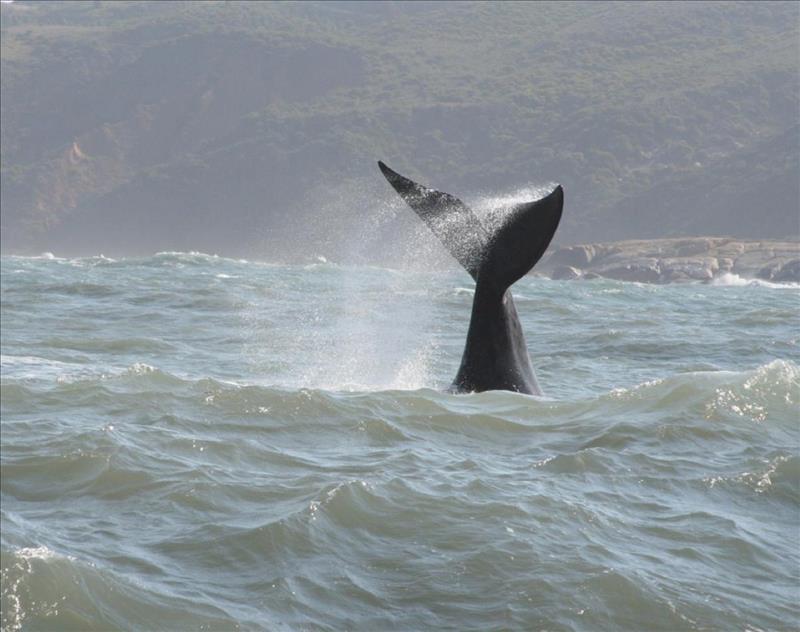Whale watching in Santa Catarina

The first whales of the year reach the south of Brazil
The beginning of July marked the opening of the whale-watching season in the south of Brazil as the first whales of the year were sighted off the coast of Santa Catarina on July 2nd. This is a fantastic spectacle that takes place annually between July and September, attracting many visitors from all over the world who vacation in Brazil. This year, the whales were first spotted at Iro Beach in Laguna, 75 miles (120 kilometers) south of the surfer's paradise, Florianopolis.
Known as "Baleia Franca" in Brazil, marine mammals travel up to 3,000 miles (5,000 kilometers) each year to give birth to their young in the protected bays off the southern coast of Brazil during the winter months in the southern hemisphere. The whales move between the coasts of South America, Africa, and Antarctica. In the coastal region of Santa Catarina, they find the warm and calm waters where they prefer to give birth. The best place to observe the blue giant mammals with their young is in the southern part of the island of Florianopolis and on the mainland in the towns of Garopaba, Imbituba, Praia do Rosa, and Laguna. This stretch of coast is one of the most beautiful in the country and invites you on an unforgettable Brazilian trip.
These sea giants belong to the family of bowhead whales and are a suborder of the baleen whales. They are among the largest mammals on earth. They are known to experts as Eubalaena australis (Southern right whale), which are distinguished from other whale species of the same genus because of the growths on their heads. According to the Brazilian Ministry of the Environment, this species of whale is threatened by extinction as its population was severely depleted due to whale hunting back in the day. Fortunately, local whale conservation projects in the south of Brazil have led to a 12% annual increase of the massive marine mammals in Santa Catarina in recent years. There, whale parents and their newborn babies take their first laps in the turquoise sea, to the excitement of locals and foreign visitors who come to see this natural spectacle up close, as the blue giants come within 100 feet (30 meters) of the shore. Baleen whales can weigh as much as 60 tons and grow up to 56 feet (17 meters) long. The young animals already weigh up to 5 tons at birth and are nourished by about 50 gallons (200 liters) of their mother's milk each day. According to whale experts, young animals gain up to 110 pounds (50 kilograms) in weight every day.
Since 1987, 670 whales have been catalogued in Santa Catarina, fourteen years after whale hunting was stopped. Between 1603 and 1973, whale hunting was part of the daily life of coastal residents and many locals made a living from whaling. Since 2000, the mammals have been protected by an 80-mile (130-kilometer) nature reserve that stretches from the south of Santa Catarina to Balneario Rincao, and is supported by a total of nine coastal cities. The Southern Right Whales Environmental Protection Area (APA), founded in 2000, works to protect the whales and is based in the coastal city of Garopaba. In the neighboring town of Imbituba, at Itapiruba Beach, the "Project Baleia Franca" researches whale conservation.
Currently, whale watching by boat is prohibited in the entire coastal region of Santa Catarina until further notice, but since the whales frolic in shallow waters very close to the mainland, they can be easily observed from the beach. Estimates from the institute "Baleia Franca" predict that more than 100 whales will appear in the shallow coastal waters of Santa Catarina this year. Many visitors who will spend their vacations in Brazil can look forward to unique sights and unforgettable whale watching experiences.
Sources: www.diariocatarinense.clicrbs.com.br; www.floripa-trips.de; www.wikipedia.org

